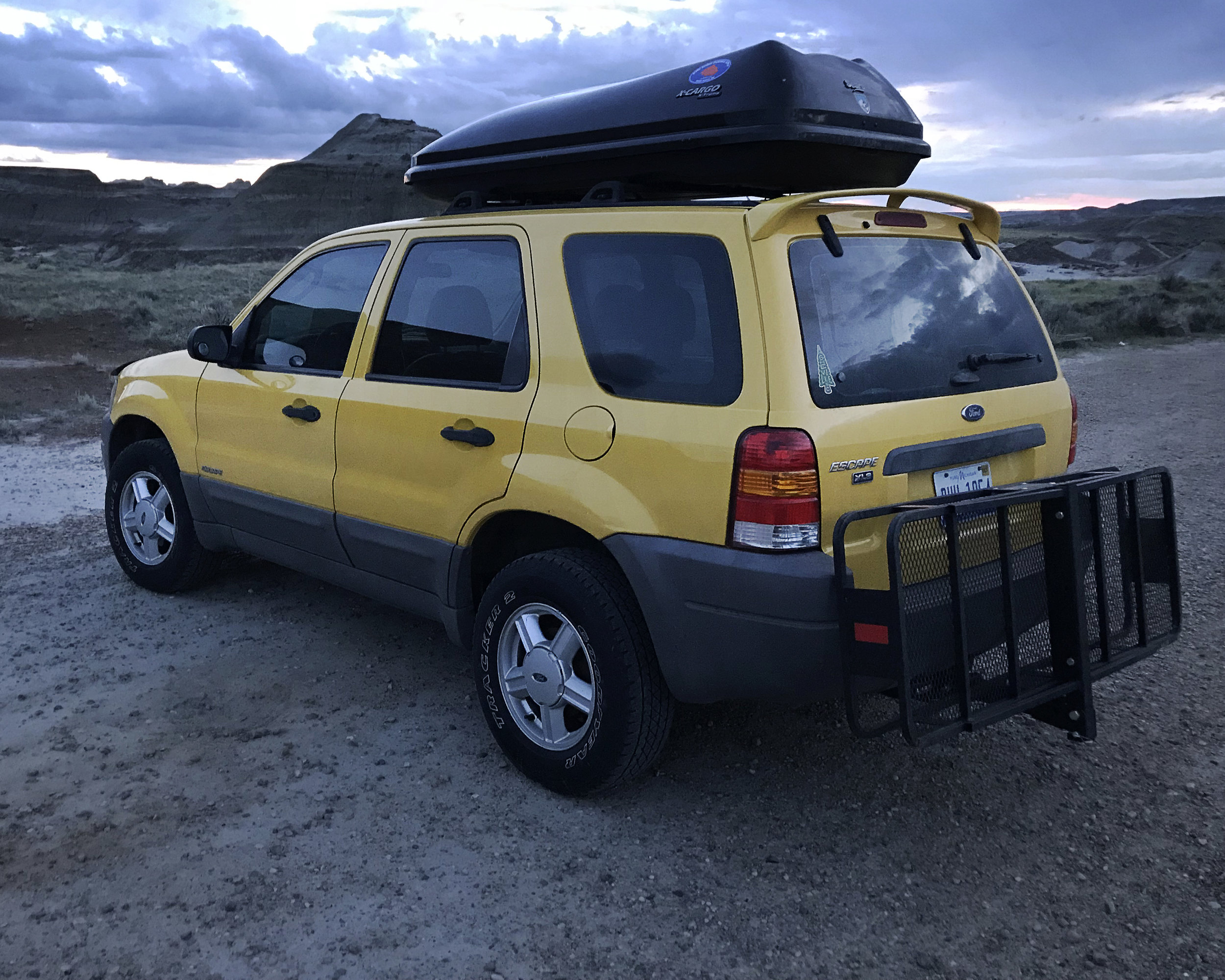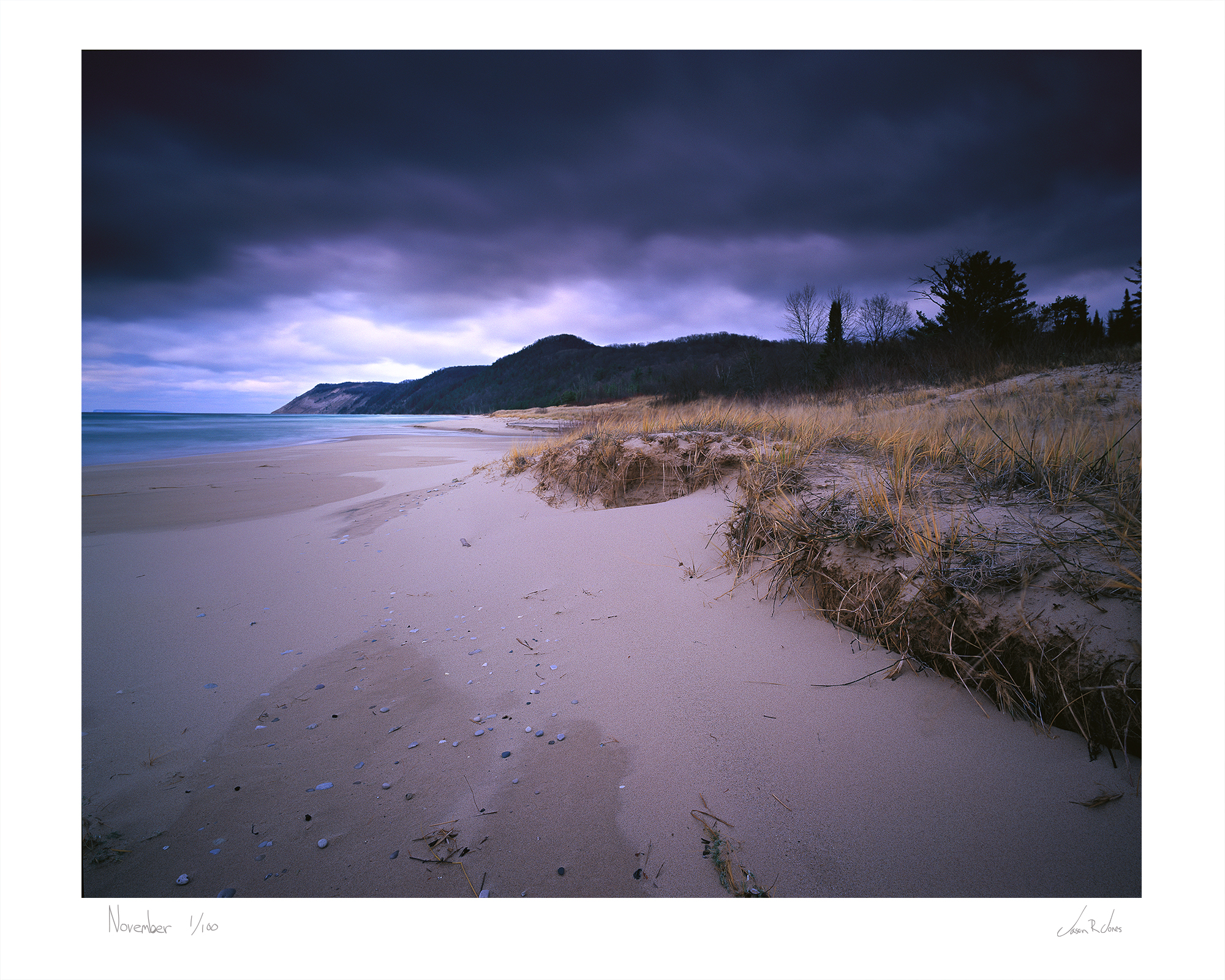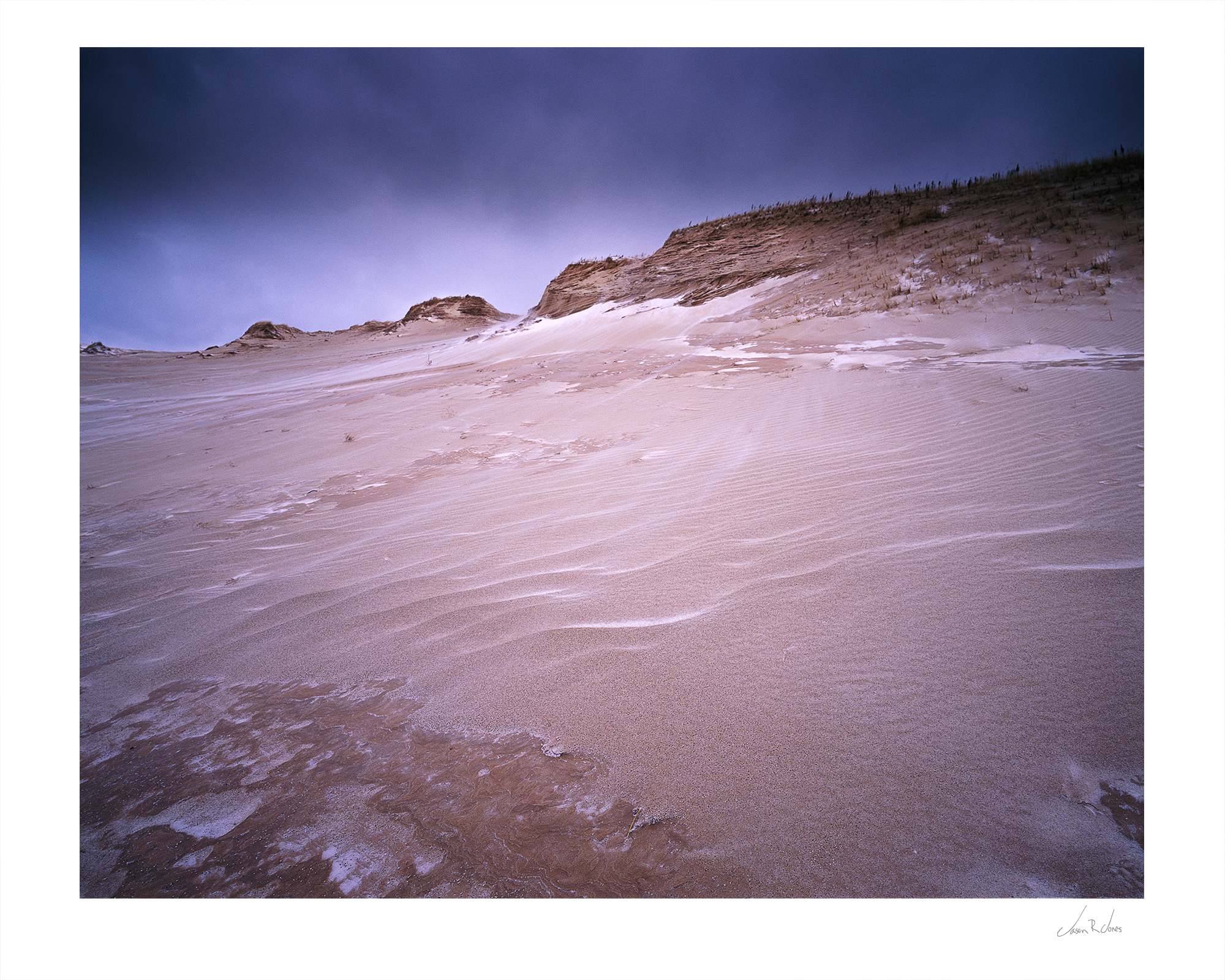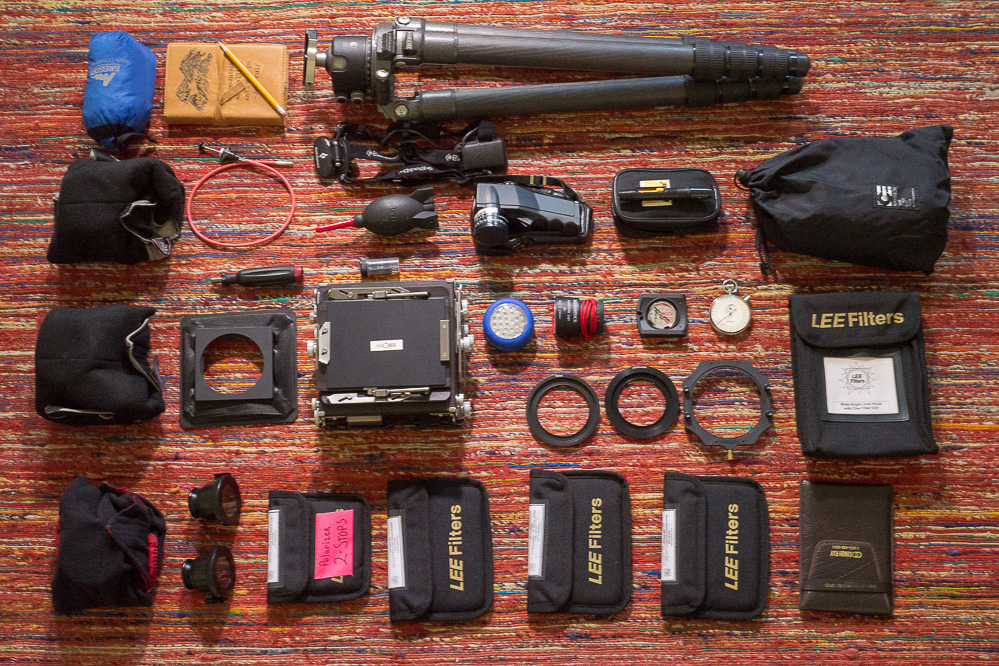Midway Geyser Basin, Yellowstone Caldera, captured with iPhone 7, September 4th 2018
2018 has been a remarkable year for me, and this is no doubt attributed to the amount of travel to new destinations I have experienced. Travel not just for photographic purposes but also for family adventure, although fortunately for my own selfish reasons photography was always at least part of each adventure. The year started off with a road trip in March to visit family in North Carolina and then on to southwest Florida. These early trips were really geared around family but on the horizon I knew an epic journey lay in wait. A journey that would ignite a love affair, and prompt a 2nd visit in a little over a month.
In early January 2018, as the year was just getting underway, I decided that as a family we needed to undertake a great North American road trip. Of course photography was always on the agenda but the central purpose was to visit areas of North America that we had not yet experienced. The area of interest was the Canadian west and more specifically, the Canadian Rockies and the city of Vancouver in British Columbia. The plan was to overland it and camp in Jasper National Park with a few stays in hotels along the way to “clean up”. As I began to plan the trip I discovered an area in Alberta about 2 hours east of Calgary called Dinosaur Provincial Park. The park appealed to me due to the striking resemblance to the Badlands of South Dakota, it’s a spitting image. It was an easy sell to my family as the Royal Tyrrell museum of Paleontology is not far away and every 8 year old loves dinosaurs so to the roster it was added. On July 5th 2018 we packed up our 4wd Ford Escape with all of our camping gear and of course the Mamiya 7II outfit and headed northwest into the great Canadian west. We spent 4 nights in Dinosaur Provincial Park, 6 nights in Jasper National Park, 4 nights in Vancouver B.C. and enjoyed every stretch of road along the way. I broke out the Mamiya in both Dinosaur and Jasper but only managed to expose 2 rolls of film the entire trip. This is due to a few factors one of which was as I stated in the beginning of this post; it was a family trip to unfamiliar landscapes. The other factor was that although both of these landscapes are breathtaking, I was having a hard time making a connection. I found the simplicity of the Canadian Badlands easier to distill down to a simple frame, with its mono tonalities and simple shapes however the Canadian Rockies although extremely beautiful, I found to be overwhelming and complex and this being my first visit I struggled to find a photographic connection.
Camping in Dinosaur Provincial Park, Alberta, Canada 2018.
On July 21st we set out for home, driving down I 5 from Vancouver back into the U.S. and eventually picking up I 90 out of Seattle. We followed 90 through Washington and Idaho arriving in Bozeman Montana on July 23rd. It was that night as we had dinner in Bozeman that we made the decision to add an extra day to the trip and visit the most famous and first of the U.S. National Parks, the fabled Yellowstone. Yellowstone National Park is extremely popular, packed with tourists, well photographed and extremely hyped and was always a place I felt indifferent toward when it came to landscapes I must visit. It was always a place I said I wouldn’t mind seeing but it wasn’t very high on my list due to all the aforementioned reasons. I couldn’t have been more wrong. On July 24th we headed south out of Bozeman MT and entered Yellowstone National Park through West Yellowstone, thus beginning a love affiair with a landscape unlike any other I had ever seen and most likely will see for that matter. Sure the park was packed full of tourists and that was definitely a turn off but what I discovered that day not only changed my mind about the park, it ignited a creative spark inside of me. Before the sun had set that day I had already began to devise a way to revisit the park that very same summer with the sole intention being to delve deeper into a relationship with the life force of the park and begin what I hope will be a long and ongoing study of the Yellowstone Caldera.
True to my intent I returned to Yellowstone on September 1st 2018, just over a month from my original visit. My father who is also a Artist/photographer flew in as well and we met at Bozeman Yellowstone International Airport. It would be a short trip and we would be departing on September 5th in the AM. I had spent the previous month planning our shoot locations, mapping out the lighting for each location in TPE and securing hotels and a rental car for the trip. I traveled with 12 rolls of Fuji Velvia 50, one roll of Kodak TMAX 100 and one roll of Fuji Neopan 100, the Mamiya 7II and my newly acquired Hasselblad 501c. I have been gravitating more and more toward the 6x6 square format that the Hasselblad V system produces but have a very uncompleted kit at this point so I opted to shoot B&W neg film and just experiment with the format. I mainly would be shooting color slide film with the Mamiya system and my hope was to walk away with a body of images I could put together to form my first study of the Yellowstone Caldera. We initially set up to troop into the park through the north entrance at Mammoth Hot Springs from Livingston MT, a trip that would take just over an hour to complete. This proved to be very inconvenient as the area of the park I was most interested in focusing on was located another hour and a half south from Mammoth Hot Spring, the upper, midway and lower geyser basins.
On our first day we spent the evening exploring and shooting in the Upper Geyser Basin, just north of Old Faithful. I quickly learned that I would need to shoot strategically and time my exposures around the still steady stream of tourists that we were sharing the narrow boardwalks with that circle the thermal features. As the sun began to set and the light became more and more soft the landscape began to speak to me and a rich and beautiful conversation took place between the landscape and I through the lens of my Mamiya 7II. I witnessed the life force of the Caldera that evening and managed to make 8 exposures before the light ran out. I was supercharged with energy and passion for the park and as we headed back to the car for our long ride back to Livingston, I was drunk with excitement and thoughts of what images may lay ahead in the days to come.
The ride back to Livingston that night was long and tiresome. Coupled with the mass exodus of park tourists and an accident on the road leading north to Mammoth, the trip took 3 hours to complete. Going to bed just after midnight it was clear that any idea of an early morning shoot the next day was out of the question. We rose late the next morning, found a great little breakfast joint and set out for Mammoth Hot Springs. I had picked a location in the Lower Terraces Area that would receive great directional light from the west at sunset and would also be located very near the north entrance to the park, making the commute back to Livingston much shorted and opening up the possibility that we could be back in the Midway Geyser Basin for sunrise the next morning. I made 7 exposures at the Lower Terraces that evening with the Mamiys 7ii amid troops of last minute tourists that shook the boardwalk like a heard of Bison. I was growing increasingly frustrated with the number and frequency of tourists that even as the sun sank below the horizon, kept coming in waves making it very hard to get a long exposure without incurring vibrations from their footsteps along the shaky boardwalk.
Mammoth Hot Springs, Lower Terraces, The Photographer’s Ephemeris
So far we had only shot at sunset but that was about to change the following morning. At lunch that day in a small grill in the bordering town of Gardiner we made the decision to abandon our lodging in Livingston and spring for a room at a small lodge right in the town of Gardner. It was certainly much pricier but was a major time saver and would allow us to be at the thermal features in the Caldera within an hour and a half. For the next two days this would prove to be a very wise choice as I knew the morning shoots would not only reduce the likelihood of running into tourist, but also allow for amazing atmospheric conditions set in some of the most amazing living landscapes I have ever witnessed. At 3am on the morning of September 3rd we loaded our rental car with our bags and camera equipment and headed south toward the park, leaving our lodging in Livingston a day early. Our destination was Grand Prismatic, a location that would provide one of the most spectacular and surreal landscapes I have ever had the pleasure to photograph.
Mamiya 7II, Midway Geyser Basin, Yellowstone Caldera 2018
We arrived at Grand Prismatic and the Midway Geyser Basin just after 5:30am and it was clear to me even in the faint predawn light that we were in for a treat. The air was cold and crisp and all around us great plumes of steam rose up and danced in the air, escaping from the thermal features and Firehole River. The landscape was alive and it occurred to me that we were but very small life forms on the face of a much more significant and sophisticated life force and that the life breath of this force was escaping her core through the surrounding thermal vents, pools and pours of the great Yellowstone Caldera. As the light intensified in those early predawn hours, the landscape shared her majesty with me and spoke to me through the lens of my mamiya 7II. I finished off the roll of Velvia 50 from Mammoth and then loaded and finished another roll and by 9am just as the first group of tourists we shuffling in we had finished. I knew at that moment that Yellowstone was truly one of the most special and unique places on the face of the earth and that I would be making many return trips for years to come as long as I was able.
Fujifilm lighttable and Velvia 50 color slide film from the Yellowstone Caldera 2018.
We made one more early morning trip into the park the next day September 4th, choosing to return to Grand Prismatic and the Midway Geyser basin. That morning I loaded up the Hasselblad 501c with Fuji Neopan 100 B&W film and made 12 exposures at both Grand Prismatic and the Great Fountain Geyser area. The trip was coming to a close and by 6:30 am the next morning I would be aboard a flight back to Northern Michigan and my father back to Waynesville NC. The trip was over, I had completed my first study of the great Yellowstone Caldera. All that remained was to develop the film and begin the 2nd stage of the image making process in the digital darkroom, but I knew it would be several months before I had a chance to work on what I had captured on this visit. Yellowstone had never been high on my list but by chance and through a last minute decision a love affair with the Caldera had begun and I had completed my first study of this breathtaking life force. For anyone who has ever doubted the significant and undeniable connection we humans share with our gracious host Mother Earth, for those who think we can exist without her, to those who think we could never have a disruptive impact on her and those who don’t think we are made entirely of her and her of us, I say visit the Caldera. Witness her breath and life force. Hear her unmistakable voice. Feel her power, majesty and grace in every drop of moisture dancing the early morning air, glistening in every deep blue/green steaming pool, and radiating from this 1,350 square mile living hot spot we know as the Yellowstone Caldera.













